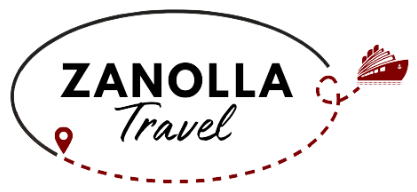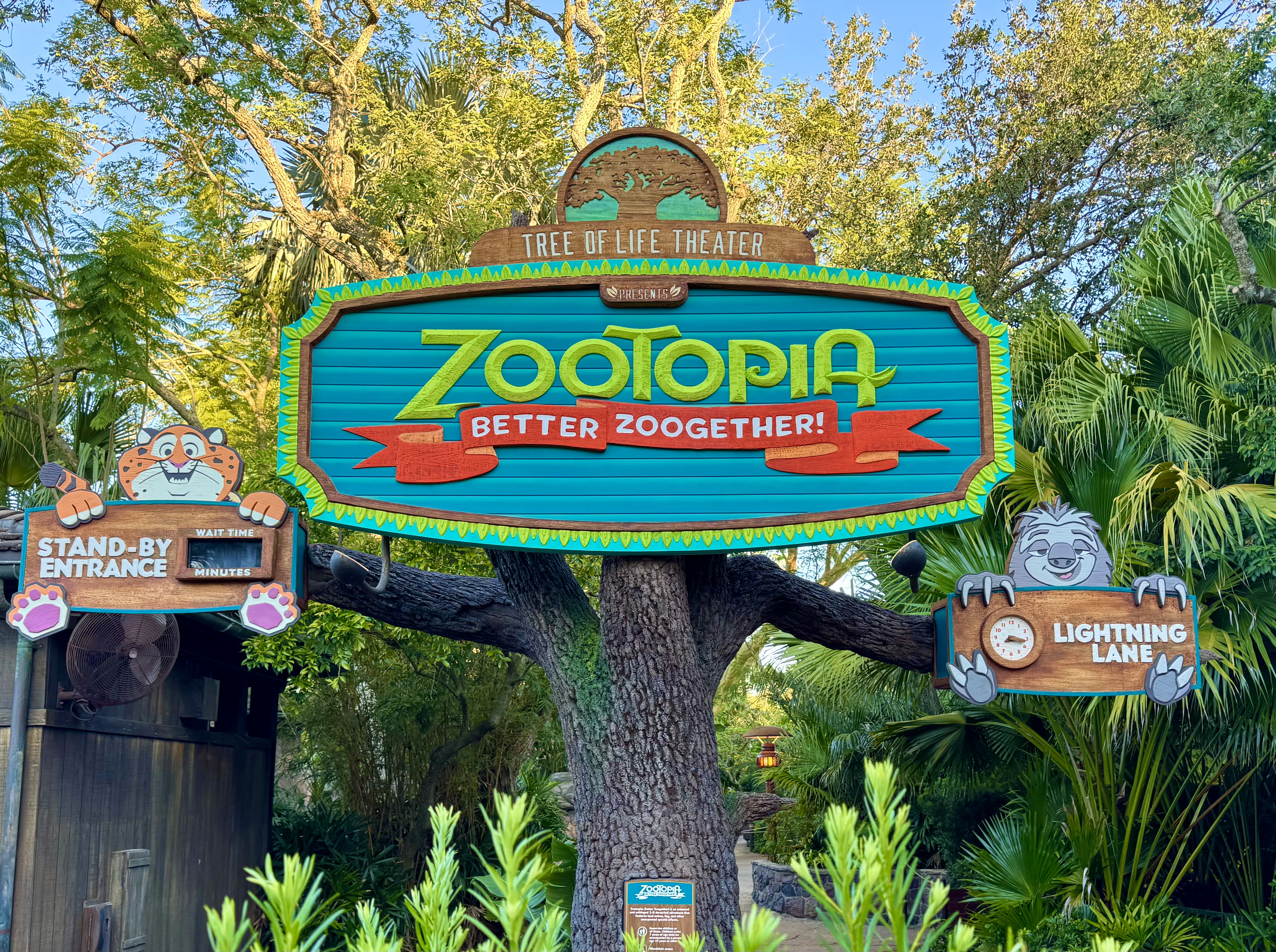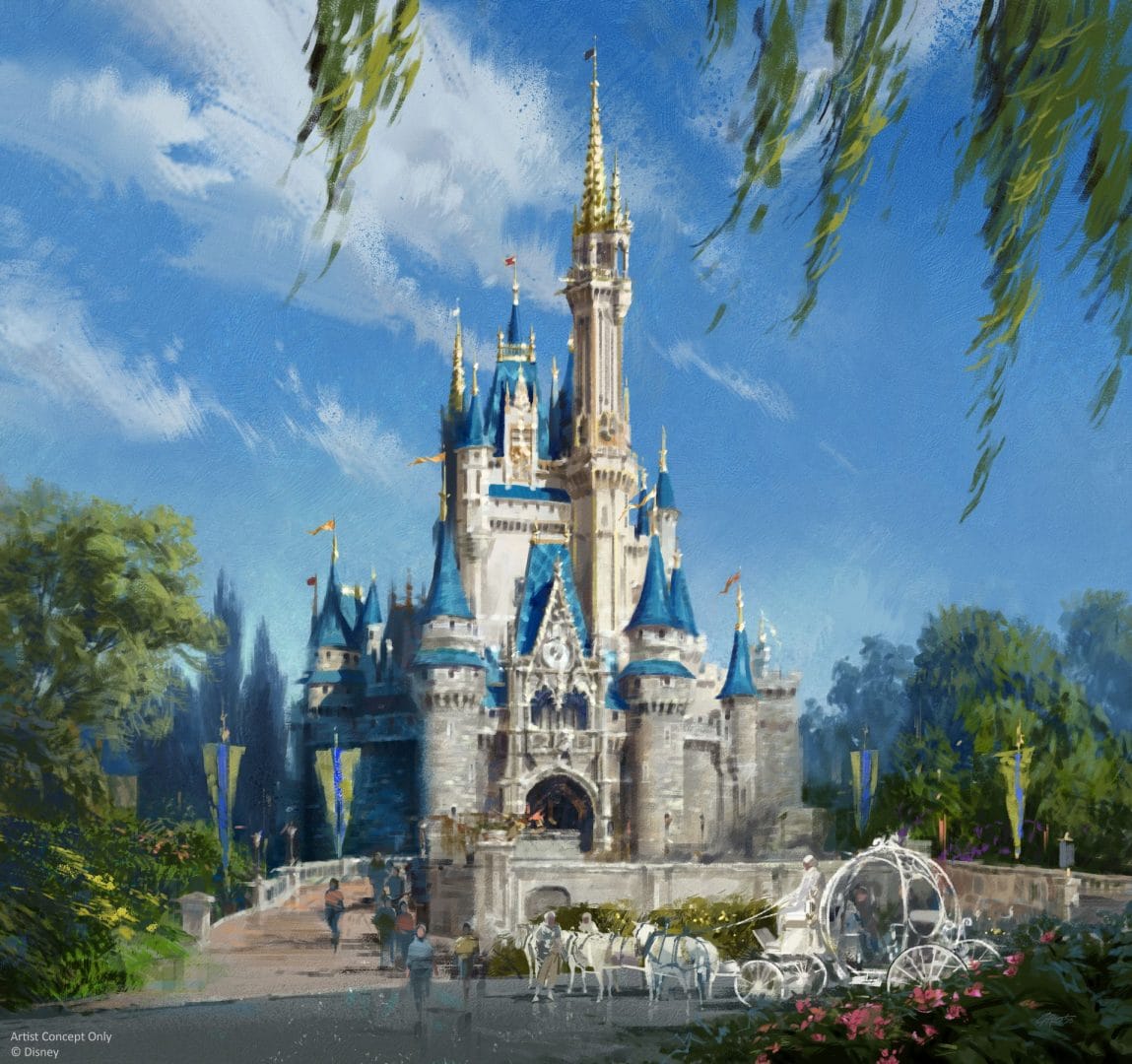Disneyland’s 70th Anniversary: From Indian Country to Bear Country to Critter Country to Bayou Country

No parcel of land at Disneyland has had more title changes than this little wedge of Disneyland. It’s perhaps the smallest land in Disneyland, but it has a history that goes back to nearly the beginning. And it’s a history few know much about. Most know it as Bayou Country today, and many know it as Critter Country, home to Splash Mountain. But before that it was Bear Country, and before that it went for some time not as Indian Country but as the Indian Village. We look at all four eras which include many well-known attractions, shops and eateries. As part of our 70th anniversary celebration join us as we head into the back country to experience this very special corner of Disneyland. You’ll learn some things you may never have known about the Happiest Place on Earth.
This podcast is produced by myself and Performance Journeys, which offers training, development and consultant support to organizations big and small and entrepreneurs new and established. With a wide variety of resources and long-time in-the-trench experience, we offer workshops, online learning, coaching and more to organizations that want to build their teams, raise organizational excellence, improve leadership and create customer loyalty. Check us out at PerformanceJourneys.com.
Please support us by not only subscribing to this podcast but offering up a rating, review, or referral to others. Be sure to check out Disney Insights where we offer key points, photos, videos, links and more. Note that YouTube carries now carries our podcasts. So please subscribe to our Disney Insights YouTube page as it will be more a part of our social media strategy moving forward. We welcome any positive thoughts and comments on YouTube as well.
And for those on this blog, know that the substance of this topic and what is shared below can be found on our podcast. You can find this podcast on iTunes, Spotify, iHeart, Podchaser, PlayerFM, Boomplay, Podbean, and ListenNotes.
The following is an outline of what is presented in this podcast:
Indian Village
The Indian Village was an opening year attraction, to include native Americans in the opening day parade, But it was situated between Frontierland Train Depot and Aunt Jemima’s Pancake House, behind the Plantation House Restaurant. Photos taken of it during this time show jungle foliage from the Jungle Cruise. After the opening summer, it was moved to a larger space which is essentially where Bayou Country is today. It would move in 1956 and then again in 1963. It would end in 1971. But in these decades when the country was fascinated by TV shows featuring cowboys and Indians, this offered a much more authentic experience than could be found in most places. With animal hide tepees, birch bark “long houses”, spears and other representations, one could see some 16 tribes brought to life, to include Apache, Shane, Winnebago, Hopi, Navaho, Maricopa, Choctaw, Comanche, Pima, Crow and Pawnee.
To access it after 1963 you passed by Fowler’s Harbor and took the Wilderness Trail. It’s how you got there in the early days, only it wasn’t a trail so much that you traversed once you passed the what would become the Haunted Mansion. It was really a set of two tunnels that went under a small hill.
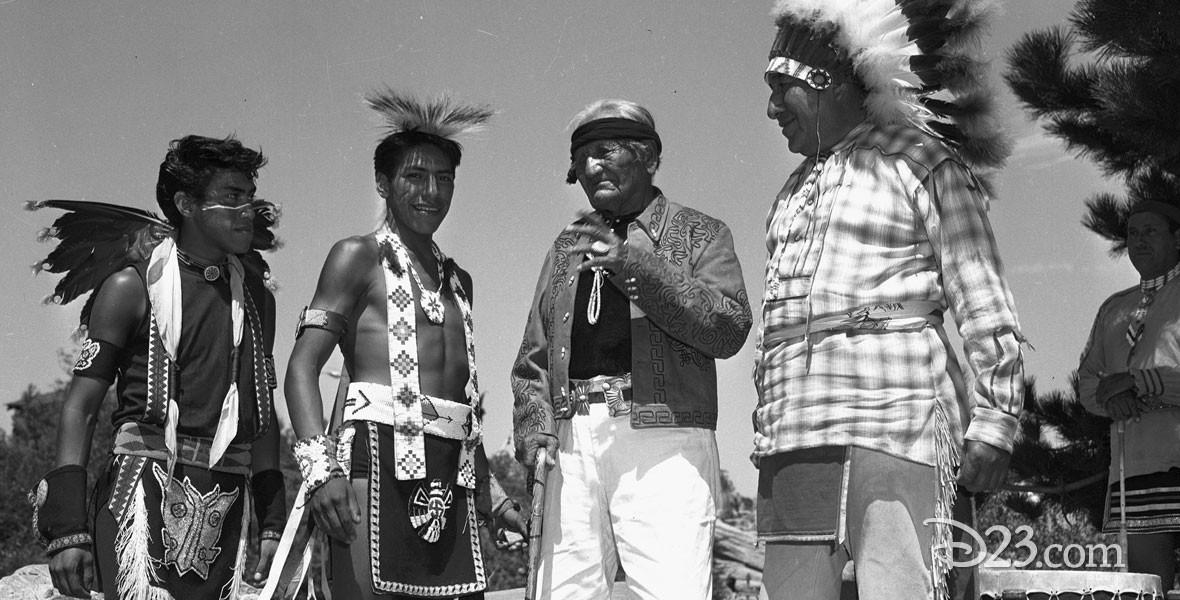
As it evolved, several features were to be part of this section of what was then considered Frontierland. The first of these was the Indian Canoes. This premiered on July 4th of 1956 and while it has been renamed from time to time, it has remained with this section of land through all four versions. It is now known as Davy Crockett’s Explorer Canoes.
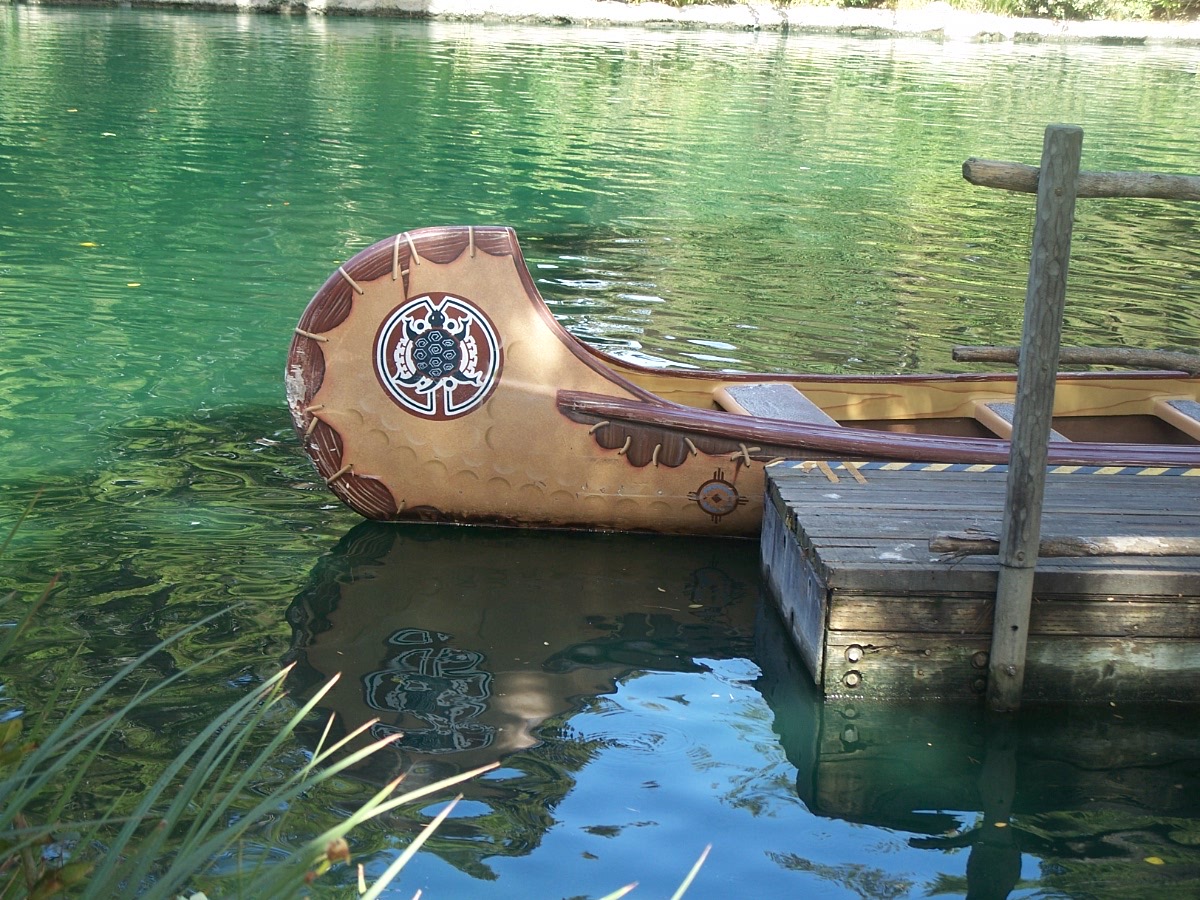
Originally called the Indian Store, but most people know it as the Indian Trading Post. This title went on throughout the life of Bear Country. With Critter Country it became known The Br’er Patch. Today it is known as Ray’s Berets.
One more thing that occurred simultaneously as all of this, and in the guide maps is shown as part of this area of the park. Fowler’s Harbor was used as dry dock for Disneyland’s S.S. Columbia and paddle wheeler Mark Twain is dubbed “Fowler’s Harbor,” and features a building known as Fowler’s Inn. It is named after Admiral Joe Fowler, who helped Walt in overseeing the construction of Disneyland. The good Admiral insisted that the Rivers of America have a dry dock area. Walt didn’t have the money to spend on it, but gave into the sensibility of it. In honor of him, Walt named it “Fowler’s Harbor”.
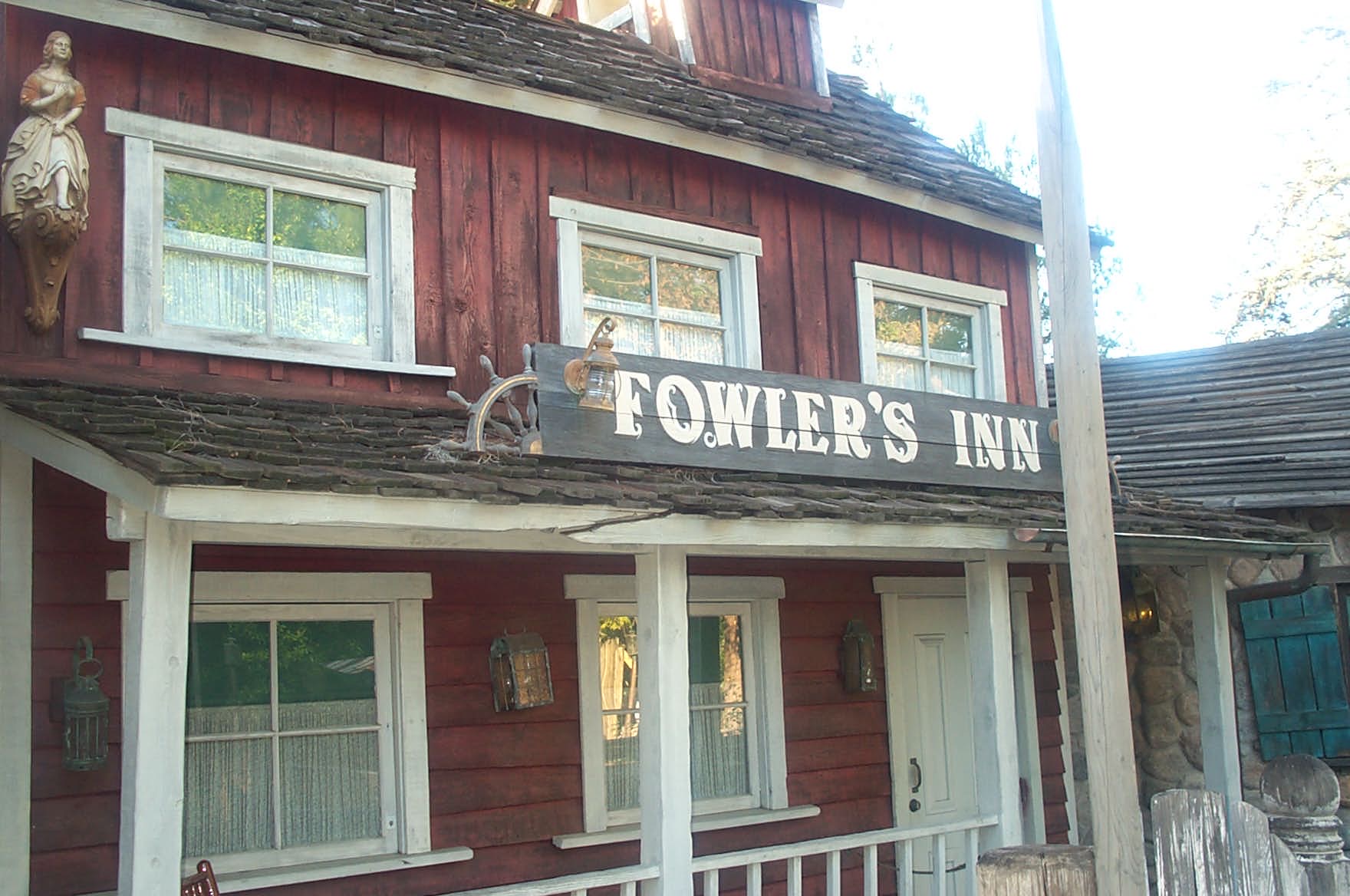
By the way, the trashcans in this area were designed to resemble tree stumps. They were relocated to Fort Wilderness Resort and Campground at Walt Disney World.
In a Reddit that asked the question, could something like this ever be put into a Disney park, “cambajamba” responded: “It’s definitely complicated to know that my Grandfather was one of the original “indians” working in this part of the park. By all accounts it was as progressive as you could have hoped for given the era, but still was more of a showcase of an imaginary past rather than a celebration of a current and thriving culture. Would be cool to see it come back but I agree with other posters – it would need native community involvement top to bottom.” He also stated that his grandfather didn’t feel like he was a “target of prejudice.”
Chief Riley Sunrise was born in Anadarko, Oklahoma, and adopted by a Kiowa family. He lived at Second Mesa, Arizona, on the Hopi Reservation and acted in several films before becoming part of Disneyland’s Indian Village. In 1957, the Soviet Press reported that Frontierland was holding Indians in captivity to amuse “capitalist visitors”, [but] Chief Riley Sunrise retorted “Captivity my eye! How many Russians make $125 dollars a week?”
Jim Korkis shared: “Walt felt that the Indian Village was a celebration of the cultural heritage of American Indians, especially since his wife Lillian was born on an Indian Reservation and grew up in Lapwai, Idaho, on the Nez Perce Indian Reservation. Her father worked for the government there as a blacksmith and federal marshal. Lillian’s mother enthralled Walt with stories of coming to the West in a covered wagon, including the Native Americans she encountered during that time.”
Later in life around 1996, Lillian Disney donated $100,000 to the Nez Perce Indians, who were trying to buy some ancient tribal artifacts.
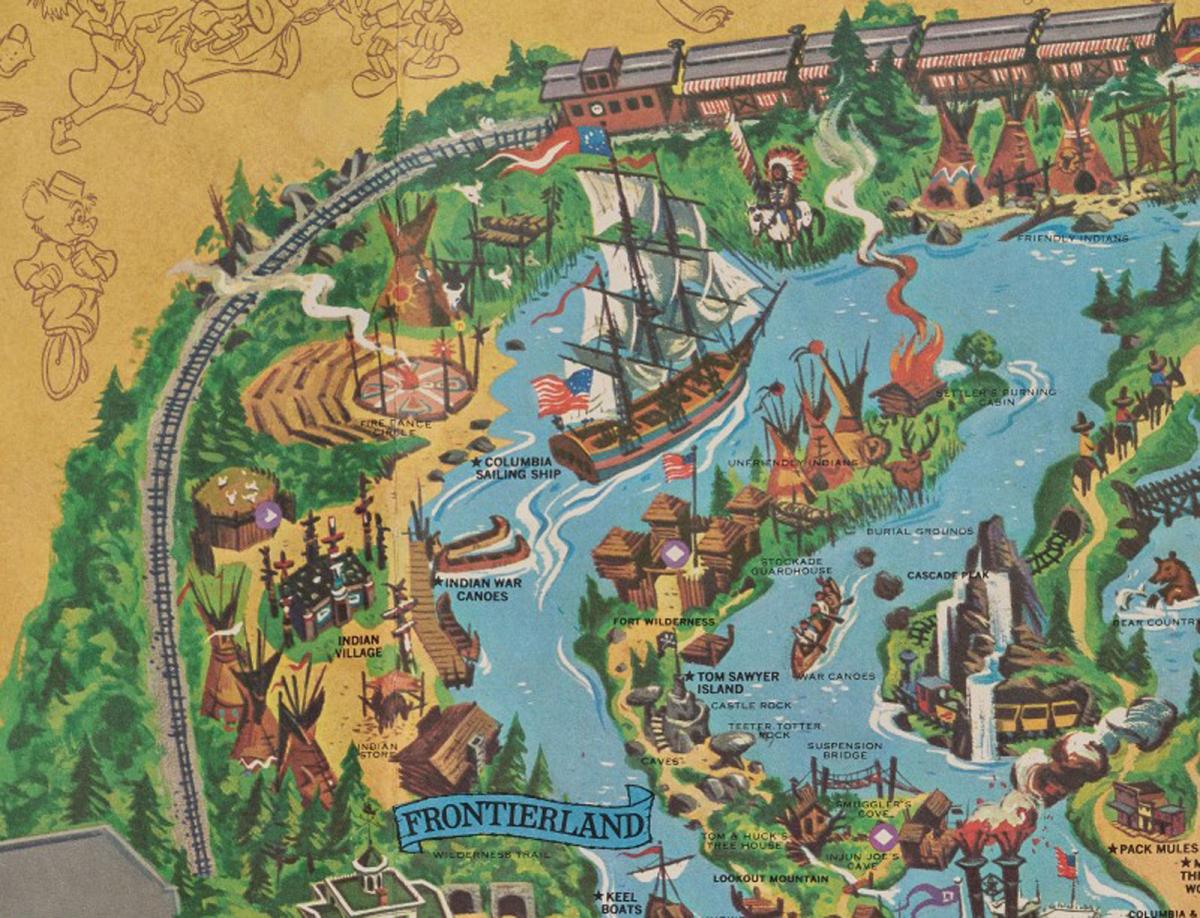
Certainly in the 1950s Korkis notes, “Walt had quite a different approach to Native Americans than some of the other movie producers. In the Davy Crockett series, even though Davy is identified as an “Indian Fighter,” he spends much of the series helping and defending Native Americans. Nearly 200 of the Native Americans that appear in the series were actual Cherokees from the Great Smoky Mountains although they portrayed Creek Indians. This was quite a change from the typical Hollywood productions that were casting Italians and Hispanics as Native Americans.”
Bear Country
Indian Village was still something that was a part of Frontierland. When Bear Country opened, it became its own land, suggesting a fantasy place where animals came to life, as opposed to the Mine Train Through Nature’s Wonderland where bears were represented as real.
When Bear Country open, the duo tunnel leading from Haunted Mansion had been taken out, and in its place came a pathway borders on each side by granite rock. The entrance to the land stated:
Entering Bear Country
“A honey of a place since ’72”
Permits must be obtained for tree climbing, fishing, scratching and hibernating. Permanent residents excepted. No permit necessary for feeding bears.
J. Audubon Woodlore, Park Ranger
Ursus Americanus, Naturalist
In The Nickel Tour it’s pointed out that Bear Country marked significant deviation from the other lands in that the layout “was a broad, straight swath through the countryside, looking like it was carved with a truck load of dynamite.” In their words, “…the roadway was urban renewal at its worst, and it was an unconvincing entrance to the Bears’ retreat.” There may have been rhyme to the reason, however, as the parks were trying to get guests to this end of the park, and that the design philosophy made it obvious about how to get there.
Gone was the entire Indian Village, but In addition to the Indian Trading Post and the canoes, there are five new key components define this land to the present:
1. The Country Bear Jamboree
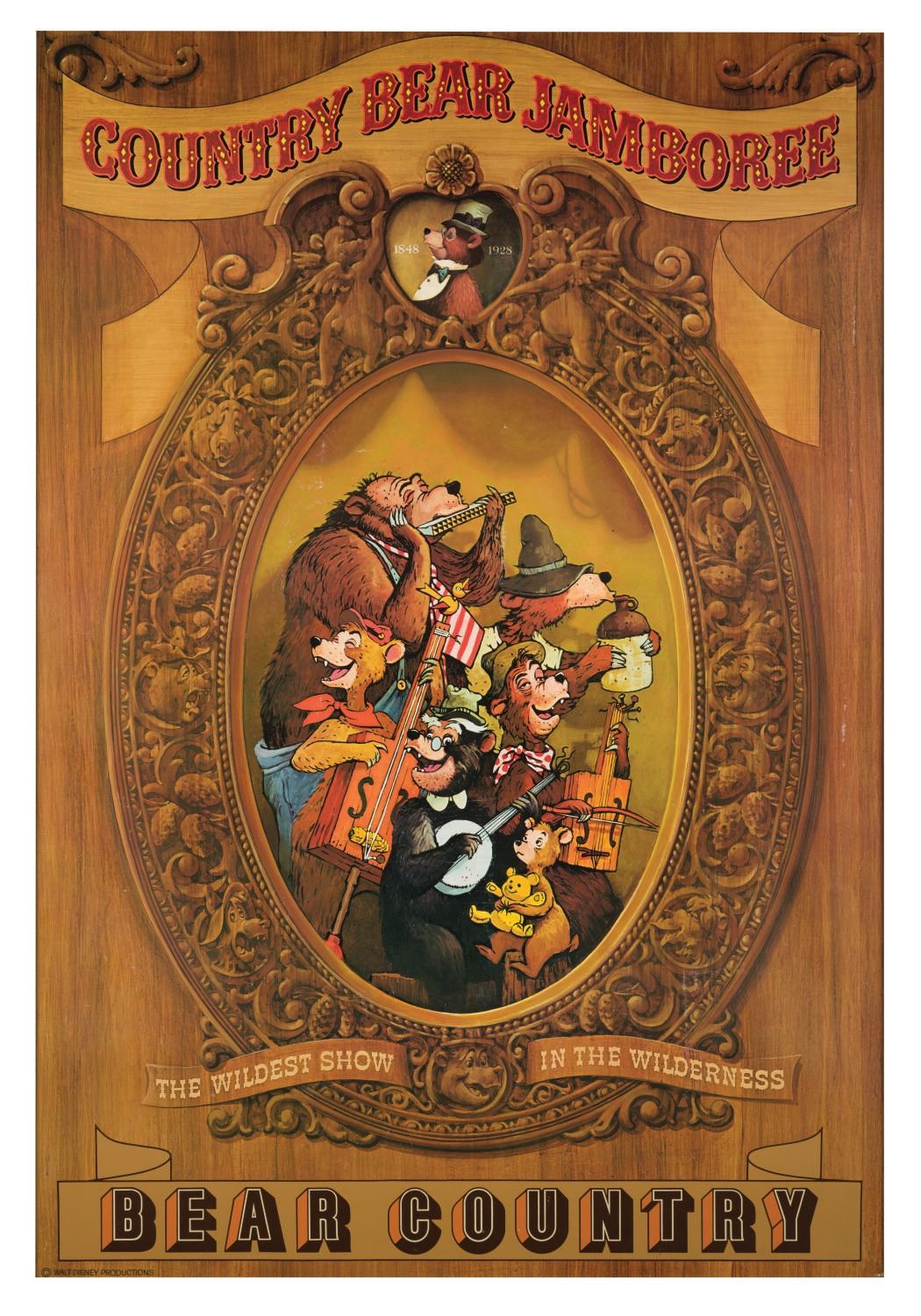
Driven by the “wild and wooly” success of The Country Bear Jamboree in Walt Disney World’s Magic Kingdom, this became the centerpiece of Bear Country. After all, the name Bear Country is just a reverse of Country Bear. But here designers built not one but two theaters, thinking it would allow for twice as much attendance. That never happened. But this is the centerpiece of this land.
A new show, Country Bear Christmas Special, with new sets, decorations, and costumes, debuted in November 1984, and another, The Country Bear Vacation Hoedown, in February 1986.
2. The Creek
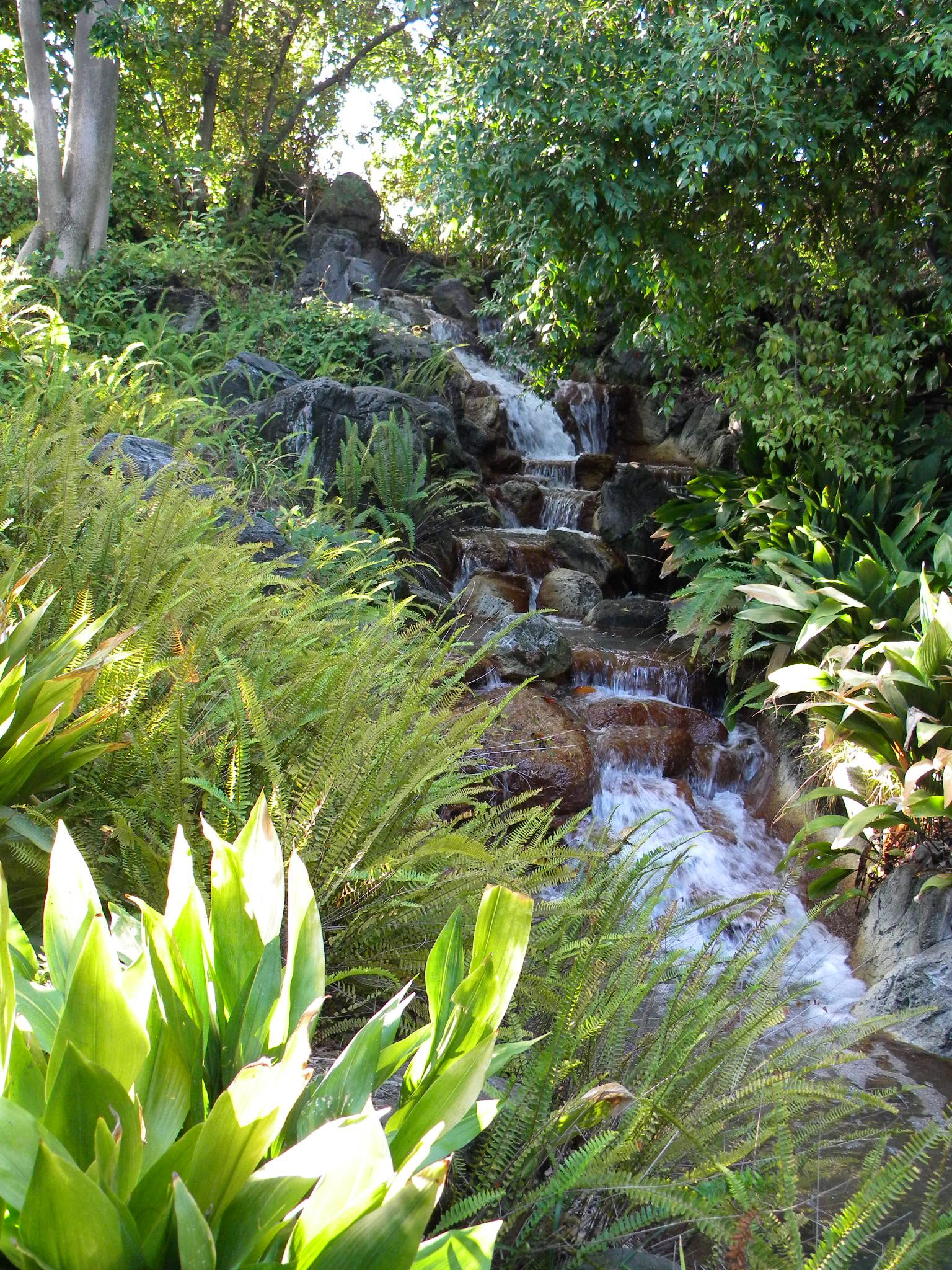
It’s a minor thing but it’s lasted until today. To get to the Country Bear Jamboree you crossed over this little creek with a small waterfall at its head. It really added a lovely aspect to the entire land. Not sure it ever had a name, but it is a hallmark of this land, no matter the title.
3. The Railroad Trestle
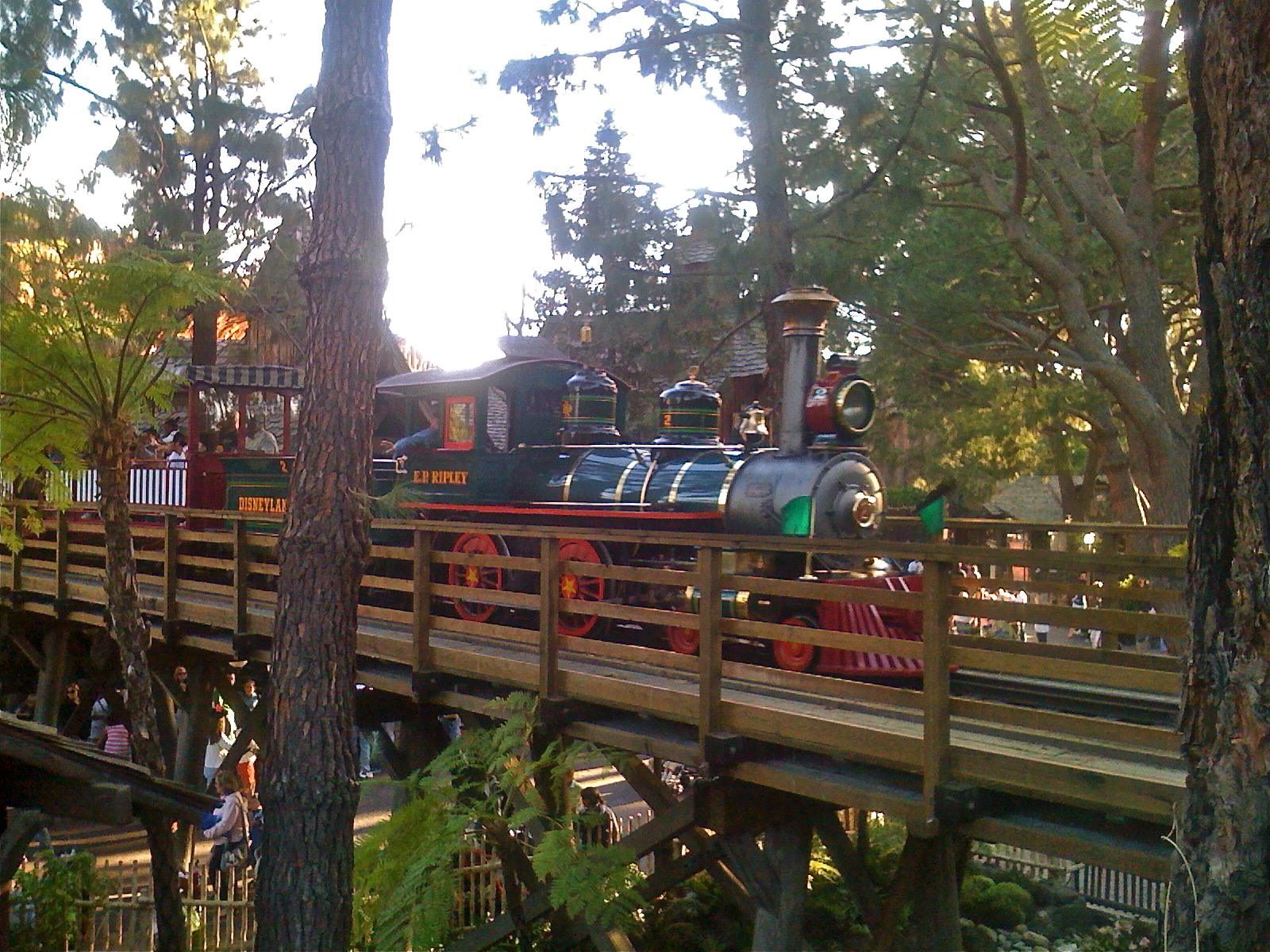
You look down to see the creek, but you look up to see the train, which emerged from a tunnel and came across the land via bridge, then disappearing behind The Hungry Bear Restaurant.
4. Clapboard Buildings
Western style edifices that welcome guests as they exited The Country Bear Jamboree. There were also a separate edifice with restrooms, but in this period of time, there were three connected buildings:
Mile Long Bar

This was really an intimate space made bigger with mirrors that faced each other on opposite sides of the bar. This mimics the original Mile Long Bar that was at the exit of the Magic Kingdom Country Bear show. It gave a more “infinite” view of this dining space with visitors that looked a lot like you when you bellied up to the bar. Added to this were the talking/singing heads of Melvin, Max and Buff.
Teddi Barra Swingin Arcade

Shooting Galleries and arcade games were all the rage at Disneyland in these years. You would find them on Main Street, Adventureland, Frontierland, New Orleans and after this one, in Tomorrowland. What made them interesting is that Imagineers would create arcade games that would be themed around the Country Bears. It would close in 2002, but there are still references to it on the side of the building and behind The Hungry Bear Restaurant, where Teddi’s swing can be found.

Wilderness Outpost.
More “western themed” merchandise. After all, you can never have enough coon skin hats.
5. The Hungry Bear Restaurant
This was a beautiful location that offered hamburgers, shakes and fries. Unique when it opened was the idea of adding Canadian bacon to the burger, similar you see now in a McDonald’s Egg McMuffin, but with a burger instead. But the real feature of this location was its two tiered deck that looked over this quiet corner of the Rivers of America. Here the ducks were plentiful and guests were happy to feed them.
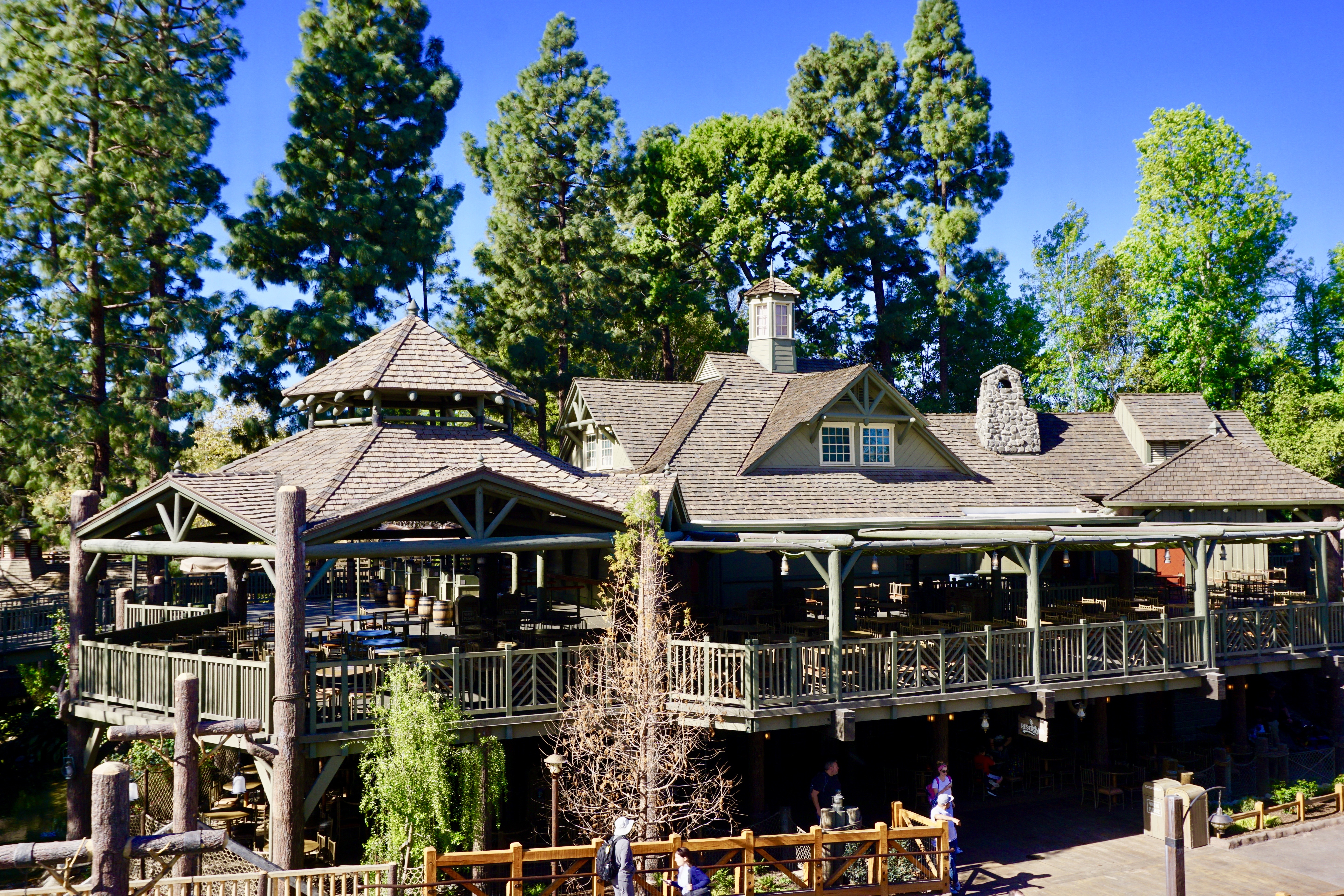
Critter Country
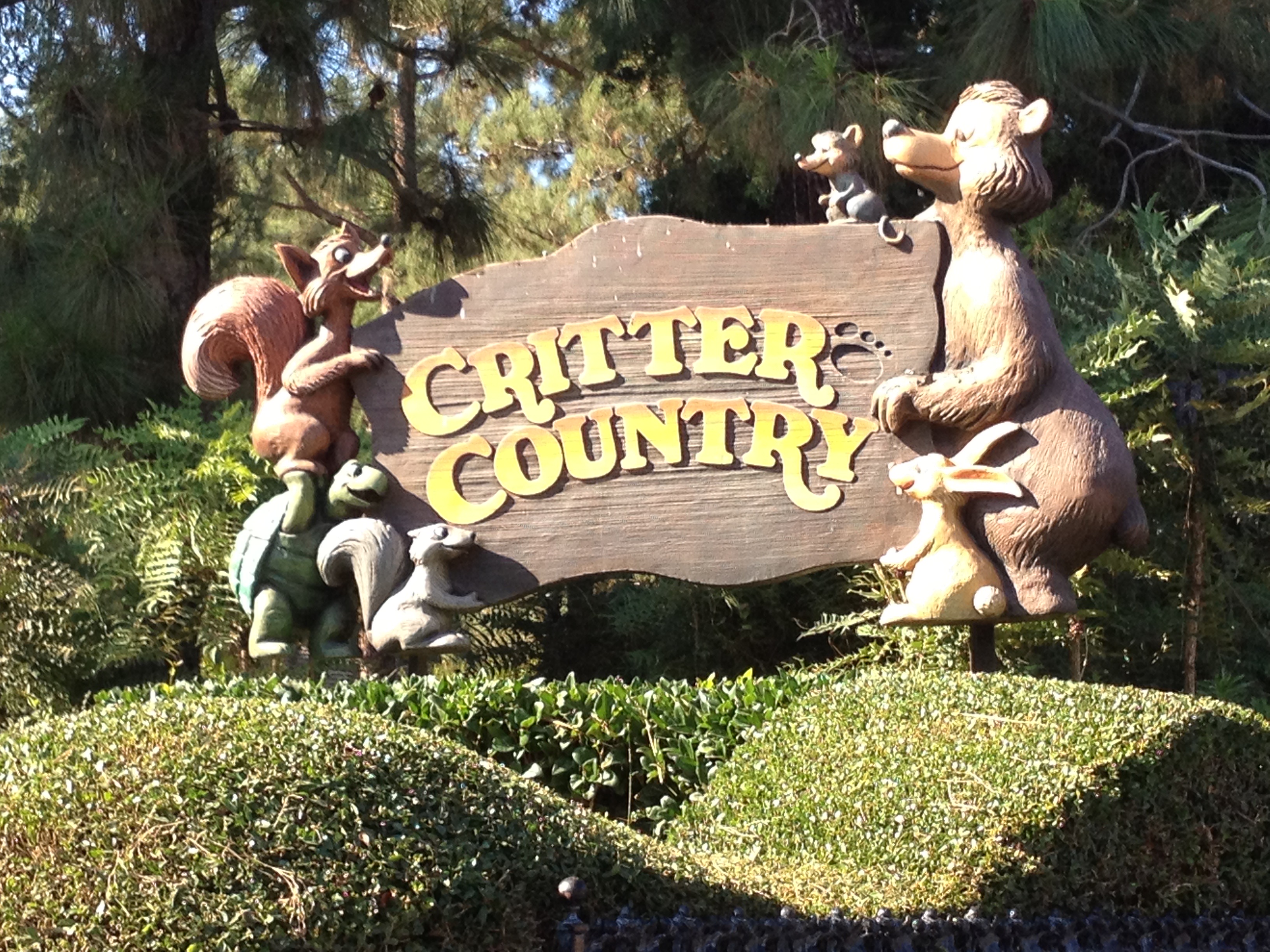
Splash Mountain
While Disneyland was the first with a steel roller coaster in the form of the mighty Matterhorn, it was again Knott’s Berry Farm who really was the first to come up with how to do a the definitive flume ride.
Operations at Disneyland knew that Guests enjoyed the flume at the nearby park. Moreover, they knew they needed another major E-ticket attraction, and they knew that Guests would love an experience that would leave them soaking wet during the summer. There was lots of pressure to create a great flume ride for Disneyland. But what would be the theme?
This wasn’t Imagineering’s only problem. Tony Baxter had been trying to figure out what to do with an attraction in Tomorrowland that had well run its course. America Sings was created in time to celebrate America’s Bicentennial. It was to replace the Carousel of Progress that had moved out to Walt Disney World. Scores of animatronic animal characters had been developed for the attraction. What could be done to utilize these animatronics in the future?
That answer came to Tony as he sat one afternoon in the traffic of the Santa Ana Freeway. What if we were to create a Flume attraction based on Song of the South and incorporate the animatronic characters into the ride?

So this is how Splash Mountain was born. Actually, it was initially called by other names like Zip-It-Dee-Doo-Dah river run. But Michael Eisner noted Space Mountain and Big Thunder Mountain and Matterhorn Mountain. Perhaps it should be called a mountain, as well. Hence, Splash Mountain was born.
Splash Mountain was one of the most clever designs ever created for an attraction. For starters, the exterior built on the impressive concept built at Knott’s creating a mountain structure to largely hide the flumes. But it was so much more than that. The layering of grasses and the sense of rock work that would give you a sense of truly finding something in the South was brilliant and beautiful design. And once you plunge into this experience, you are brought into a completely different world. It is truly one of the most immersive experiences designed, whether that track layout features tales from Bre’r Rabbit or Tiana. It is one of the most clever layouts imaginable. In fact, it was for years my absolute favorite attraction whether at Disneyland or Walt Disney World (and even more so at Tokyo Disney Sea). Perhaps the most horrible experiences I ever had was doing a backstage tour when I was developing programming for the Disney Institute. Unfortunately, the magic fell away as I saw that this thing which seemed to plunge into the bowels of the earth really never went a foot under ground. Brilliantly clever that I had been fooled by its design for so many years.
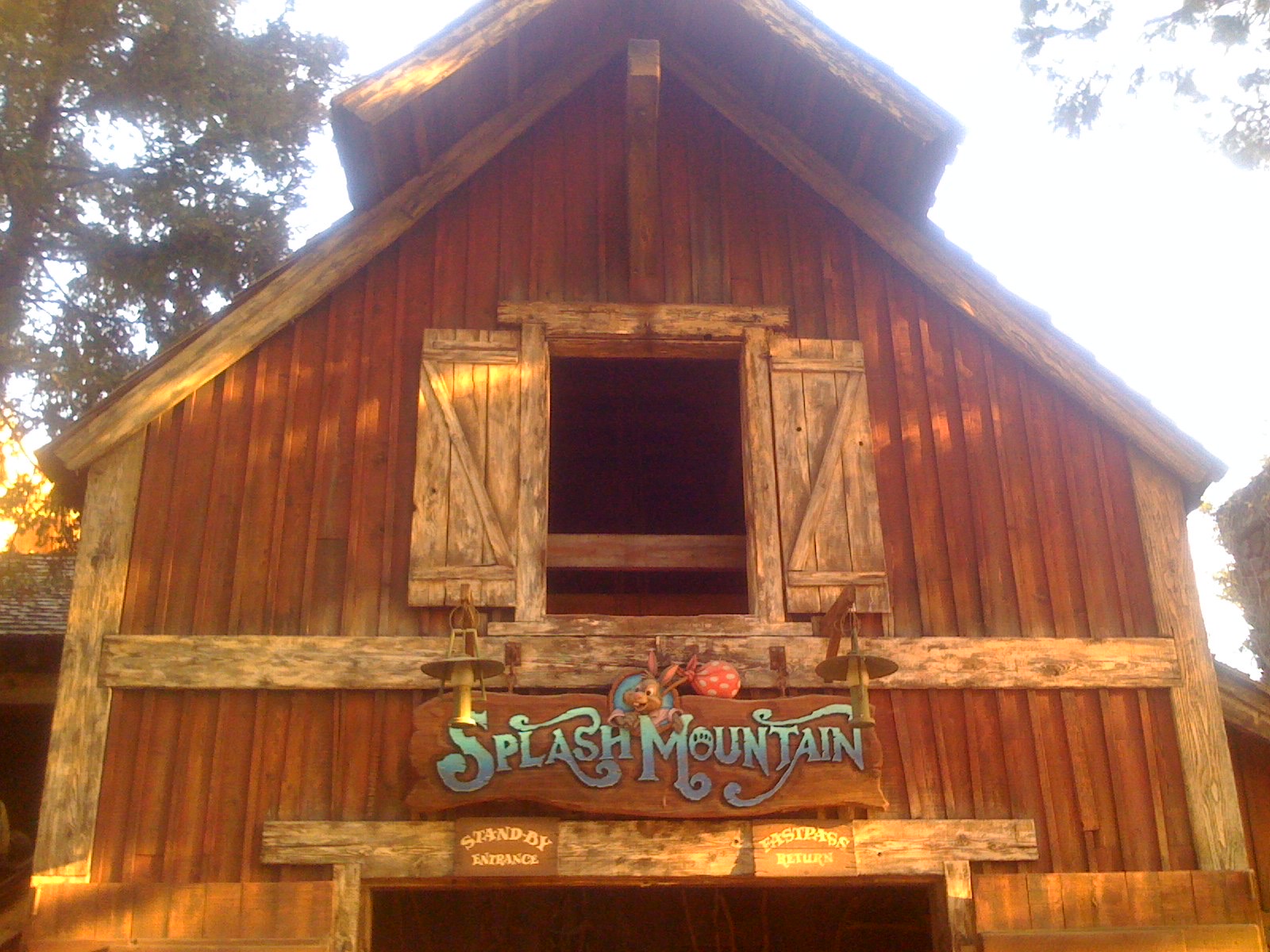
Even with the massive addition of Splash Mountain, it is astonishing that little of Bear Country was taken out. Even the Indian Trading Post was kept with its grass style roof. Only the restrooms on the back end were removed. But what would be changed would be the title. Since the land was no longer exclusively about Bears, the name of this space was changed to Critter Country.
It didn’t take long to realize that a Country Bear show was still not enough to bring traffic all the way to that corner of the park, thus spreading the crowds.
The Many Adventures of Winnie the Pooh
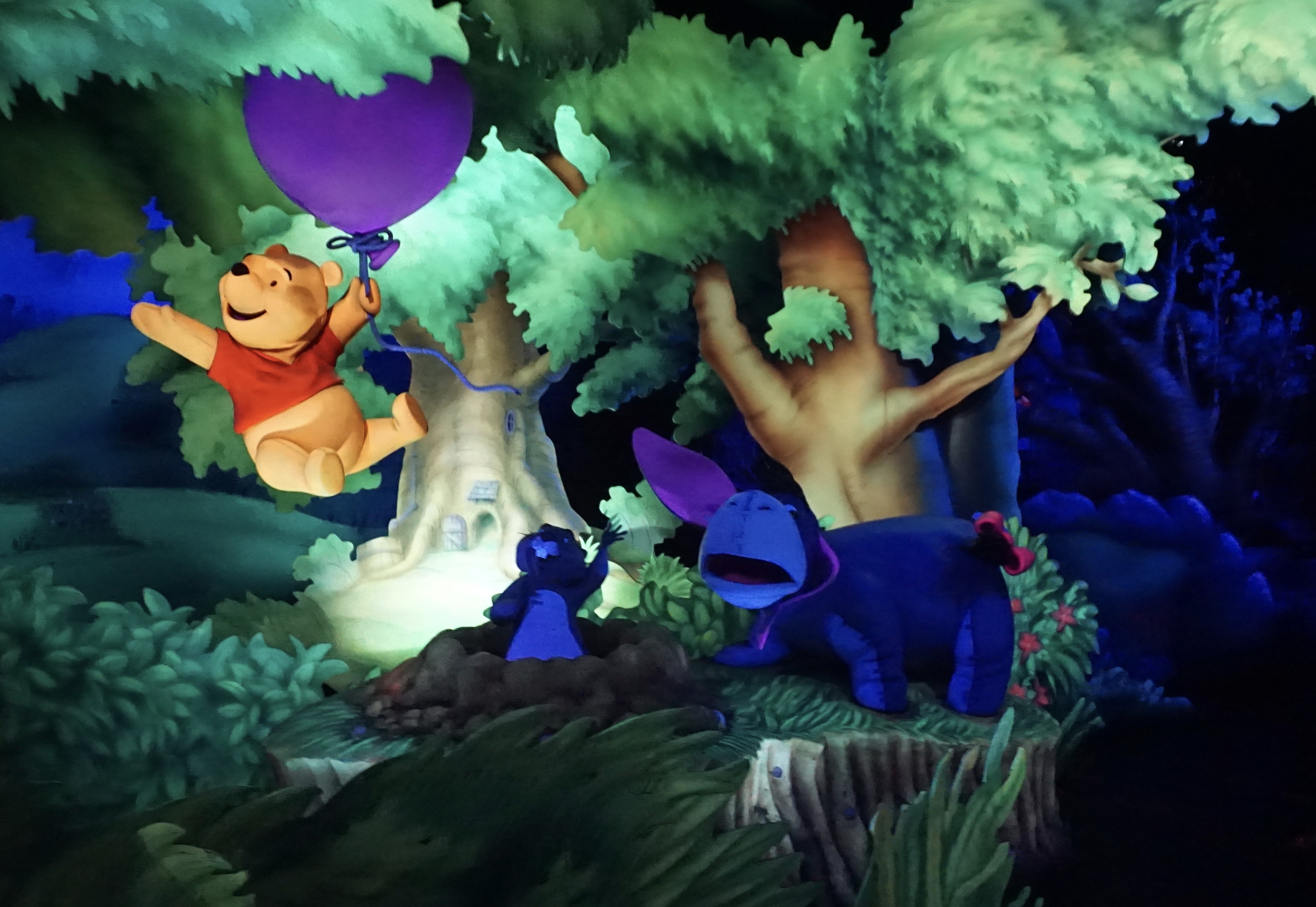
April 2003, a major change came to the land. Gone was The Country Bear Jamboree, and in its place was The Many Adventures of Winnie the Pooh.
While the Country Bear Jamboree was not unpopular, it seldom filled to capacity on a continuous basis, with the exception of peak hours during the day, or peak times during the year. Different versions of the show, themed to Christmas and vacationing were added, but none of those quite did the trick either. Bear Country was still a quiet stretch of the park.

With the idea of building Splash Mountain came the concept of re-theming all of Bear Country to Critter Country, adopting all of the animals that would be found in this land. This probably created the greatest upsurge in attendance, but it never met operations expectations. Visitors to this land was usually no more than 2% of the remaining park’s attendance.
When The Many Adventures of Winnie the Pooh opened at Walt Disney World’s Magic Kingdom in the mid nineties, it quickly became popular. This was not too surprising as Winnie the Pooh was one of Disney’s most successful merchandise–if not most successful brands. It rivaled and at times beat Mickey Mouse in merchandise categories. Disneyland operations saw this as a terrific way to boost attendance in this corner of the park. So the bears of the Country Bear Jamboree headed out to make room for WInnie the Pooh.
Note that the great compromise during this era was to remove Mr. Toad for Pooh at Magic Kingdom, and to remove The Country Bears for Pooh at Disneyland. That way at least one version of this attraction would remain in at least one park. That was painful for many on both coasts. And in truth, the Winnie the Pooh attraction at Disneyland is really a beautiful attraction, while the Magic Kingdom version is more clever with its flood sequence. Placed somewhere that wouldn’t require the removal of something else, it would have certainly been better received.
The combination of these two things certainly elevated attendance to this corner of the park. But it was still dead end. So probably one of the final big things to occur during this era was not any addition to Critter Country, but the build out of Star Wars Galaxy’s Edge on the back end of Disneyland. The completion of this in 2019 now allowed guests to not dead end at Critter Country but to completely go around the Rivers of America. Unfortunately, there were two casualties of this. First, though huge efforts were made to improve the look and experience, the Rivers of America were made shorter. Second, in order to add a pathway through to Galaxy’s Edge, the river front patio seating at Hungry Bear Jamboree became receded. Those actions forever changed the nature of this quiet corner of the park. It was now as much a part of the heavy flow of guests one finds at Disneyland.
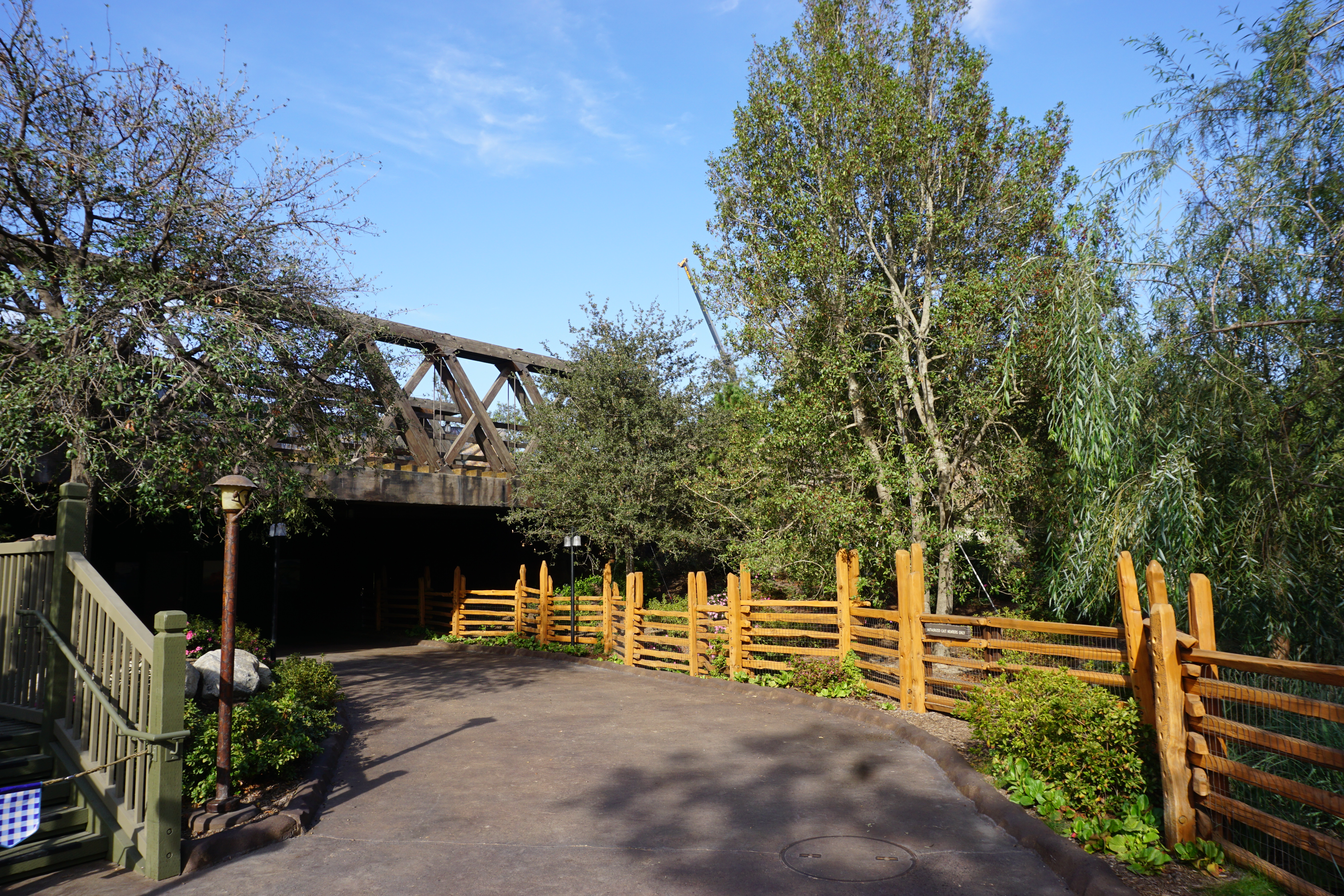
Bayou Country

Bayou Country comes courtesy of Tiana’s Bayou Adventure. Forget that Winnie the Pooh was still down the lane, the intent of this land was to extend the Louisiana experience from New Orleans Square into the bayou. And other than Pooh, that kind of makes sense here at Disneyland. Not that it hadn’t happened already with Splash Mountain.
Tiana’s is still controversial more than a year after opening. We’ve spoken extensively about it when it opened both at Disneyland and Walt Disney World. It’s has so much going for it, especially for really working to tie it to New Orleans Square, which we covered in our last Disneyland 70th podcast. But it also brings a difficult comparison to its former owner, which by any creative measure, was a hallmark in Imagineering Design.

The most awkward aspect of Bayou Country is Winnie the Pooh. One could squint a little with the idea of a teddy bear in “Critter” country. But Bayou Country? It feels all the more awkward. Strangely, the concept of the Country Bears in that space seems more appropriate than ever. Perhaps that’s why the Hungry Bear Restaurant has been renamed the Hungry Bear Barbecue Jamboree. And with it comes some light theming and reminders of this land’s own heritage, to include musical songs being played in the background.
Summary
When we think of Disneyland, this area of the park isn’t at the top of the list like Main Street, Fantasyland or Adventureland. But it has a heritage that makes it very much a part of this Magic Kingdom’s landscape here in Anaheim. Hard to see where the future of it lies. It’s a small territory for sure. Still one that works to create the Happiest Place on Earth.
Want to visit Disney?
Hopefully this podcast has made you realize you need help and support in planning your next trip to Disney. David and Leah with Zanolla Travel know Disney in ways few do and they can make your next trip on land or sea an exciting one–or at least less stressful! Be sure to contact them as you explore your next vacation, whether it is a Disney theme park vacation, a cruise, or an Adventure by Disney. There is no charge to utilize their services, but it will save you enormous time getting all the details right, and with their insight you can be assured you’re going to experience the best trip possible. Contact them today!
David & Leah Zanolla
ZanollaTravel.com
Owner/Agents
Books From Your Host at Disney Insights
Another way you can support the podcast is through our books!
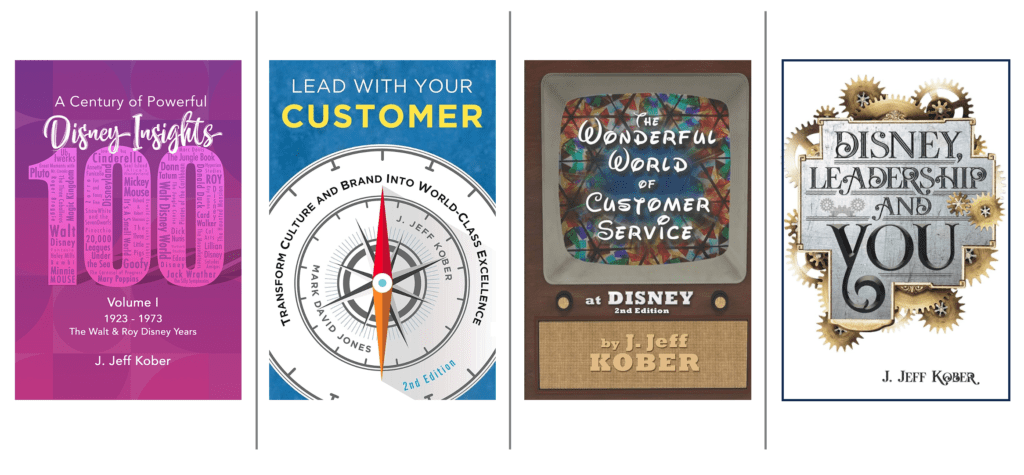
My newest book, A Century of Powerful Disney Insights, Volume I 1923-1973, The Walt & Roy Disney Years is available!
Also, check out my two of my other books, The Wonderful World of Customer Service at Disney and Disney, Leadership and You.
Also, for those examining other business benchmarks beyond Disney, check out Lead with Your Customer: Transform Culture and Brand Into World-Class Excellence.
Find Excellence in Your Organization!
This podcast and post is provided by J. Jeff Kober and Performance Journeys, which celebrates more than 20 years as a training and development group bringing best in business ideas through books, keynotes, workshops, seminars and online tools to help you take your organization to the next level.
Want a Keynote Speaker? More than just nice stories, I offer proven insight and solutions having worked in the trench.
Need Consulting? I’ve worked for decades across the public, private and non-profit arena.
Need Support? We offer so many classroom, online, and other resources to help you improve your customer service delivery, leadership development and employee engagement.
Contact us today, and let us help.

Thanks for joining us for this podcast. Know that as in the title of Performance Journeys, it’s as much about the journey as it is about performance. Find the second star to the right, and keep going straight on till you reach it. Follow the compass of your heart, and know that with a smile and a song, a little faith, effort and pixie dust, your dreams can come true. After all, if we can dream it, we can do it. Until next time, bright suns, we’ll see you real soon!
